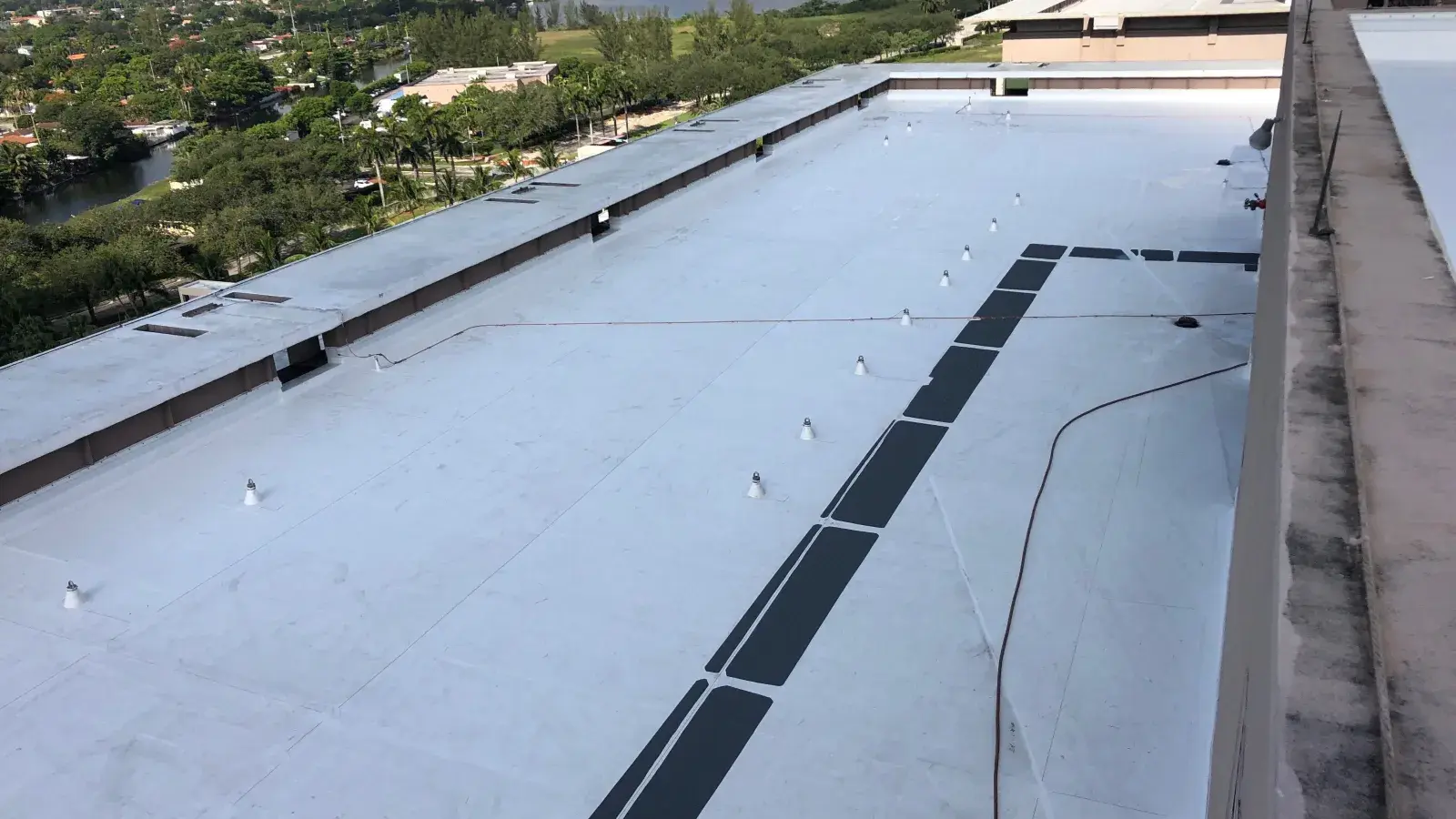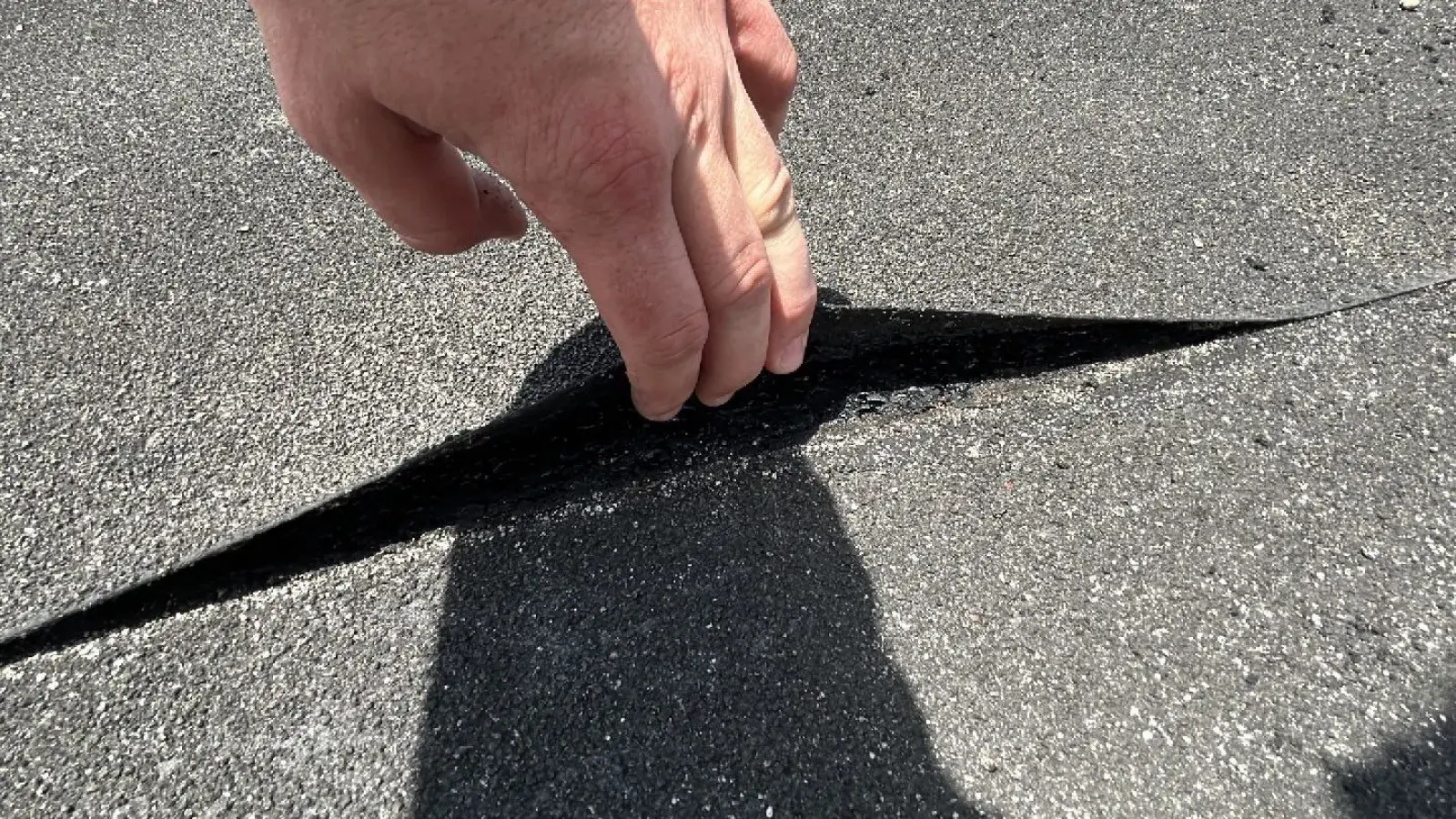Understanding Built-Up Roofing Systems
The array of choices for roofing options can be overwhelming. One roofing system, called BUR, has been around for over 100 years and has proven to be reliable. But what is BUR roofing exactly, and why has it been considered a top choice for low-slope or flat roofs?
What is a Built-Up Roof (BUR)?
A built-up roof, also known as BUR, is a multi-layered roofing system primarily used on flat or low-slope roofs. Its legacy stretches back over 100 years, showcasing its resilience and efficiency. A typical built-up roof system consists of alternating layers of reinforcing fabrics, bitumen (often asphalt), and surfacing materials like gravel, which grants the system its waterproofing capabilities. This layered approach provides a continuous sealed surface, distinguishing it from other roofing types.

Components of a Built-Up Roofing System:
- Base Sheet: This is where it all begins. Installed over polyisocyanurate (polyiso) insulation or a cover board, this sheet provides the foundational waterproofing layer. The base sheet is generally adhered using mechanical fasteners, hot asphalt, or even cold-applied adhesives.
- Felts or Fabrics: As the middle layer, reinforcing felts provide added insulation and flexibility. They can be adhered with hot or cold bitumen, proving the adaptability of the built-up roofing process.
- Bitumen: The bitumen, which can be hot or cold, is either coal tar, asphalt, or a cold-applied adhesive. This asphalt-based sheet is highly durable, providing a reliable bond between the layers.
- Surfacing: Depending on your preference and building's requirements, several surfacing materials, including gravel, mineral cap sheets, or other protective coatings, can be used. They prevent UV damage and offer protection against natural elements.


Why Choose a Built-Up Roof System?
1. Time-tested: With a legacy spanning over a century, it's clear BUR has been and continues to be a dependable system.
2. Redundancy: Multiple layers mean added protection. Even if one layer is damaged, the ones below continue to safeguard the building. (However this can also allow water to be trapped in your roofing system without your being aware.)
3. Longevity: A built-up roof lifespan can range between 15 to 40 years, heavily depending on maintenance and local climatic conditions.
4. Energy Efficiency: Modern BUR systems can integrate a rigid insulation layer, making them more energy-efficient. However, older built up roofs without rigid insulation are some of the least energy efficient systems.
5. Reflectivity: The availability of white-coated cap sheets helps in reflecting the sun's rays, thus maintaining cooler building interiors. The majority of built up roofs are not installed using a white-coated cap sheet so be sure this is discussed.
6. Comprehensive Protection: The continuous sealed surface means superior waterproofing and UV protection.
7. Guarantees/Warranties: Depending on the materials used, BUR systems can have extended warranties, ensuring long-term peace of mind.


Considering the Pros and Cons:
Advantages:
- Cost-effective over its lifespan.
- With the gravel layer installed on top, it becomes fire-resistant.
- Lower maintenance than some systems.
- Can last 30+ years if installed correctly.
Drawbacks:
- The installation process can be lengthy and may involve strong odors.
- Very difficult to locate leaks
- The added weight from gravel might necessitate structural reinforcements.
- Might not be ideal for buildings in use because of the messy installation.
- Prone to errors in installation
- Multiple layers of roofing increase variables for failure
- Felt layers can trap moisture from the air that will cause roof to fail prematurely


Basic Maintenance and Repairs:
Ensuring your built-up roof's longevity requires regular check-ups. Addressing simple issues like open joints, blisters, or cracks promptly extends the roof's lifespan and ensures optimal performance.
Conclusion:
When choosing a roofing system, considering your building's specific needs is crucial. The built-up roofing system has a long history and is proven to work well for low-slope or flat roofs.
However, it has been many years since the invention of this roofing system. Since then, better and more cost-effective roofing technologies have been developed. This is why at Best Roofing, we no longer install built up roofing. Single ply and modified bitumen roofing systems have emerged as the top choice for flat roofing in Florida. As with any significant investment, weigh the pros and cons, and consult with roofing professionals to make an informed decision.



